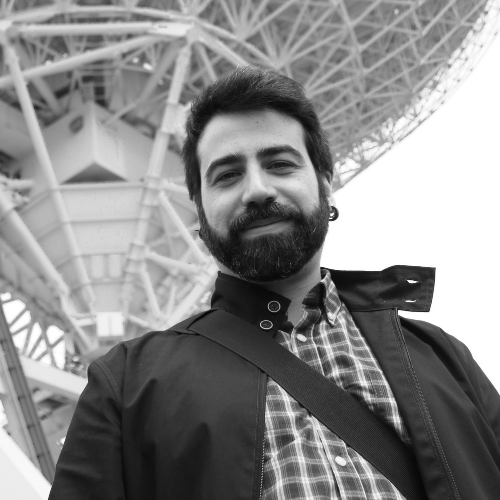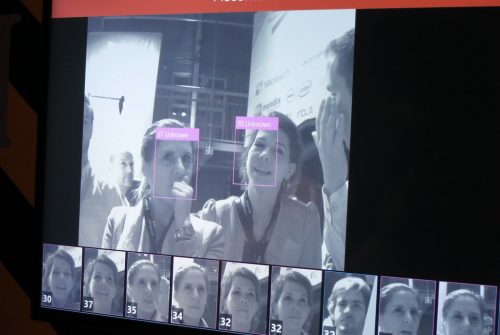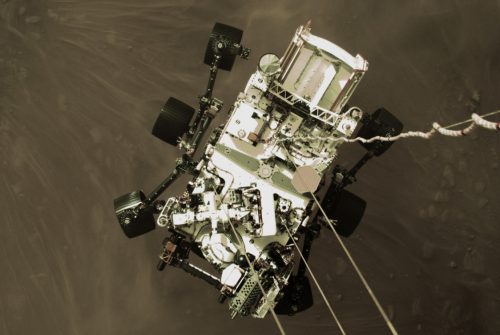Death 2.0: can we achieve digital immortality?
6 May 2019 | Written by Alberto Laratro
Between social media, virtual assistants and satellite navigators, we are disseminating the world with an enormous amount of data about our identity. What happens to these data when we die? Could they be used to "bring us back to life"?

Facebook was born with a fantastic basic idea, connecting people with loved ones but, over time, it is turning more and more into a place where people go to commemorate them. A study by the Oxford Internet Institute estimates that within 50 years, on the blue social network, the dead will be more than the living: the largest cemetery in the world. If the number of new users continues to grow at the same rate, by the end of the century there will be almost 5 billion accounts belonging to dead people, mostly located in India, Africa, and Indonesia.
The profiles “In memory of”. A huge number of profiles that correspond to a huge number of data, even sensitive, whose fate is unclear. “These statistics give rise to new and difficult questions about who owns all these data, how they should be managed in the best interests of families and friends of the deceased and its use by future historians to understand the past”, commented the author of the article Carl Öhman, Ph.D.
On social networks slowly are appearing ways that allow users to decide what happens to their data once they have passed away: Facebook allows you to indicate a digital heir who will be able to manage the profile of the deceased, making it commemorative or deleting it. This last operation which in theory eliminates the data from the servers within a month, in reality, does not lead to total elimination of our presence on the social network since interactions in groups or public pages are not canceled. The same applies to Twitter, the contents that somehow leak from their profile remain property of the 280-character giant.
Not just social networks. The issue of data management of the dead does not only concern Facebook or the other social networks: our online presence is like the walk in the woods of Hansel and Gretel, a trail of crumbs that allow us to reconstruct our path, our life. From the GPS data that, in an aggregate manner, remain in Google’s hands, to our medical records which, in Italy, anonymously, remain in the archives for 30 years so they can be used for research. Even our online purchases somehow return an image of our person. Books, music, films in some way define us, show our tastes, our passions, interests. While our data, with our preferences and our choices, remain in the hands of the e-commerce giants, on the other hand, our heirs would have no way of accessing them. Losing them forever at our death without having a way of transmitting the information contained in those choices, means losing a part of who we were forever.
With an ever-increasing presence of IoT devices, virtual assistants like Alexa or robots that track a plan of our houses like Roomba, the amount of data that is collected is immense. These are data whose fate is unclear because, unfortunately, as often happens, legislation cannot keep pace with technological innovation.
From data to history. “Facebook should invite historians, archivists, archaeologists, and ethics experts to participate in the process of curing the vast archive of accumulated data that we leave behind when we die – explained David Watson, co-author of the study cited above – it is not just about to find solutions that will be sustainable for the next two years, but for many decades to come. “
Never before, in fact, historians have had access to such a large number of data, testimonies and cultural references, it will be important to find, in this optics, a balance between proper management of privacy and the possibility of reconstructing history.
Imagine a not too distant future in which it will be possible to reconstruct the personality of a historical figure and make it a means of transmitting contextualized knowledge about his era, similar to wax statues 2.0. Efforts in this direction are, in fact, already underway. The project New Dimensions in Testimony, born from the collaboration between the University of Southern California’s Institute for Creative Technologies and the Shoah Foundation is recreating a dozen interactive biographies of the last survivors of the Holocaust, through special 360 ° camera systems it is possible to return a three-dimensional image of these interactive interviews, able to answer visitors’ questions about their lives and the experiences of those terrible days by automatically generating the answers using an archive of information provided by the original witness even after his departure.
“If the person who provided the testimony – explained David Traum, project leader – never said, for example, his favorite color, the system is not allowed to find an answer, for example by extrapolating from the colors of the clothes of the person. It should be clear to the user that the simulation is meant to talk about a specific situation. ” While a responsive system can make its subject more responsive, Traum warns that being able to build answers would mean putting words in someone else’s mouth: “It might become difficult or impossible to know if someone actually said something or not. Authenticity is a major problem. “
Virtual ghosts. Going a little further you can get to results at the same time disturbing and wonderful: the possibility to virtually reconstruct a trace of the personality of a dead person and give way to his loved ones to relate to them after their departure. A way to face mourning or a risk of distorting our relationship with death?
These are grieving chatbot. The technology is similar to that of virtual assistants like Siri or Alexa, but the purpose is different: to provide a new way of dealing with the disappearance of a loved one. An example is Roman Bot, developed by Eugenia Kuyda, a Russian programmer. Upon the sudden death of one of his dear friends, Roman, Kuyda felt the need to talk one last time with him, so she decided to collect the countless messages exchanged with him and use them as an archive to allow an AI to simulate his personality.
In 2014 it was born instead Eternime, a startup that wants to make us all “immortal” or rather make our memory such. This is an app that automatically collects data from the phone or directly by asking users some questions. In this way, they hope to collect enough data to allow us, in the future, to create our own virtual copy, a chatbot capable of interfacing with our loved ones.
A digital alter ego, however, is risky: it is not easy to maintain the balance between returning a convincing simulation and the risk of disclosing private information that one would like to remain as such. Moreover, the data collected by initiatives of this kind would be in the possession of the companies that offer these services forever and any updates that would modify the functioning of these chatbots would not be questionable: the dead cannot withdraw from the contracts.
Going further upstream, the problem is of ethical nature, as well as legislative. How healthy is it to allow an almost morbid attachment to the dead? If and when the technology will be developed enough to provide faithful copies of our loved ones, will this alleviate the suffering of relatives and friends of the dead or risk compromising their mental health and their relationship with one of the fundamental parts of life, its end? According to Carl Öhman “as a society, we should think twice before leaving the nature of our post-death lives entirely to an unregulated market”.





